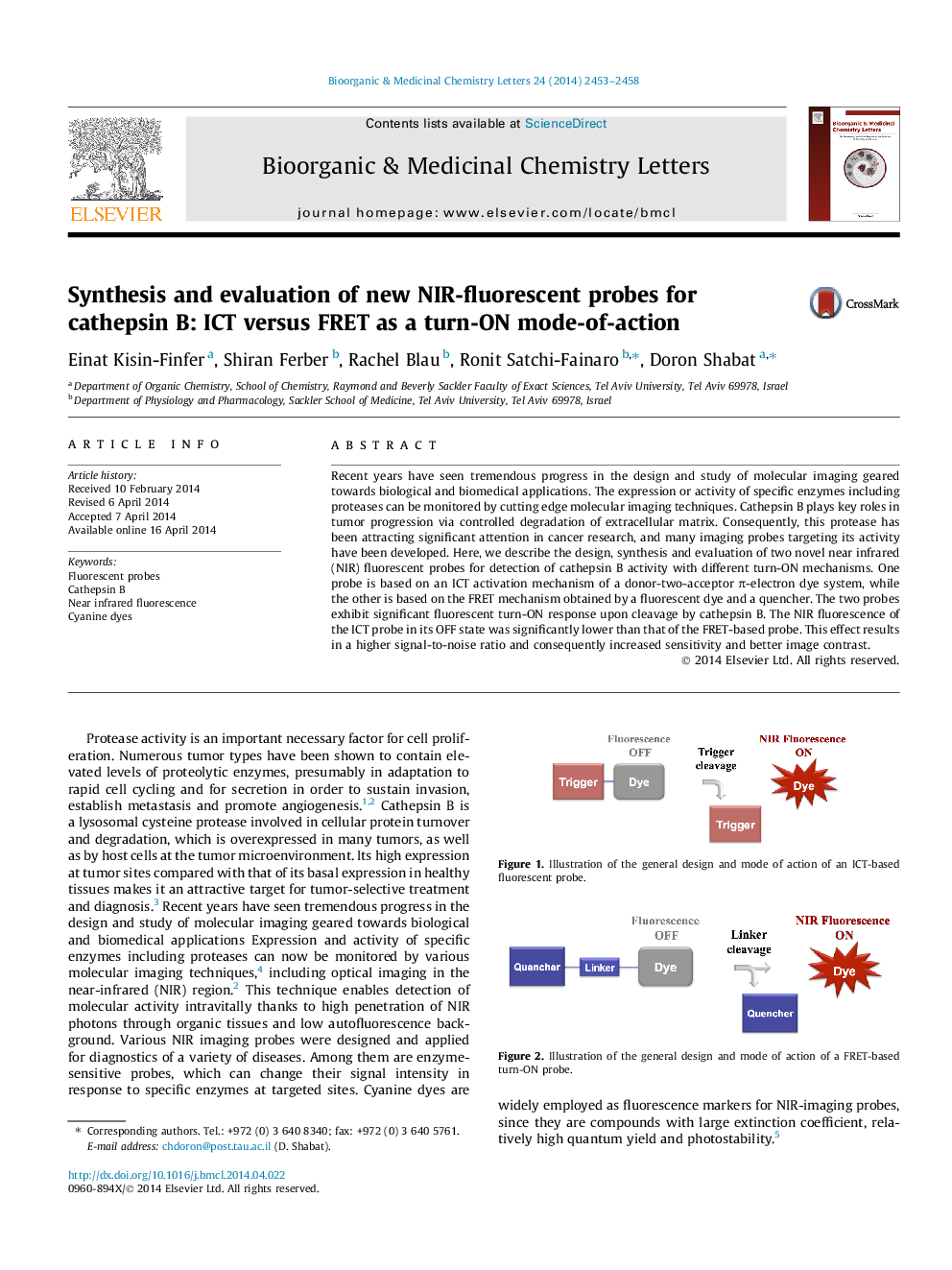| Article ID | Journal | Published Year | Pages | File Type |
|---|---|---|---|---|
| 10592114 | Bioorganic & Medicinal Chemistry Letters | 2014 | 6 Pages |
Abstract
Recent years have seen tremendous progress in the design and study of molecular imaging geared towards biological and biomedical applications. The expression or activity of specific enzymes including proteases can be monitored by cutting edge molecular imaging techniques. Cathepsin B plays key roles in tumor progression via controlled degradation of extracellular matrix. Consequently, this protease has been attracting significant attention in cancer research, and many imaging probes targeting its activity have been developed. Here, we describe the design, synthesis and evaluation of two novel near infrared (NIR) fluorescent probes for detection of cathepsin B activity with different turn-ON mechanisms. One probe is based on an ICT activation mechanism of a donor-two-acceptor Ï-electron dye system, while the other is based on the FRET mechanism obtained by a fluorescent dye and a quencher. The two probes exhibit significant fluorescent turn-ON response upon cleavage by cathepsin B. The NIR fluorescence of the ICT probe in its OFF state was significantly lower than that of the FRET-based probe. This effect results in a higher signal-to-noise ratio and consequently increased sensitivity and better image contrast.
Related Topics
Physical Sciences and Engineering
Chemistry
Organic Chemistry
Authors
Einat Kisin-Finfer, Shiran Ferber, Rachel Blau, Ronit Satchi-Fainaro, Doron Shabat,
